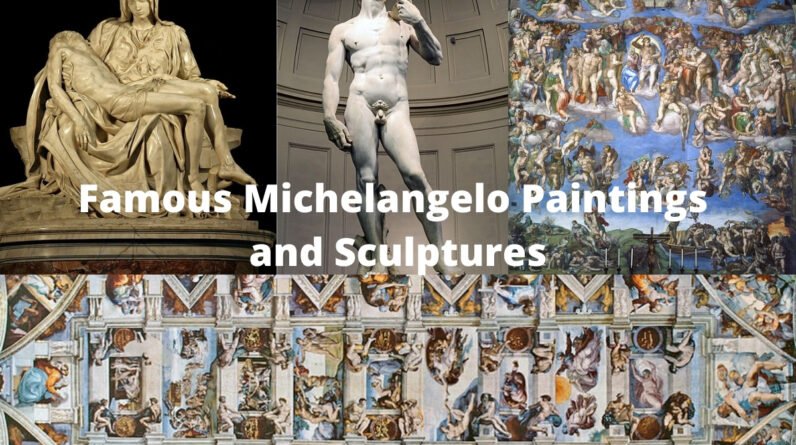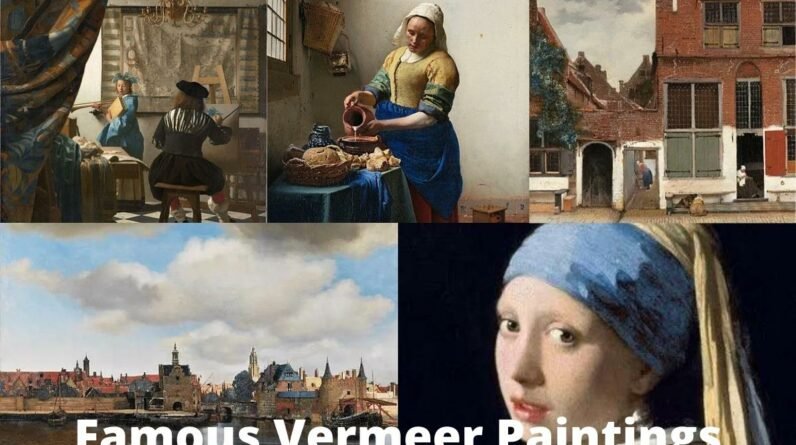
The best ship paintings are not necessarily the most well-known, but many have a special place in history. From the late 17th century to the present day, the world is awash with masterpieces depicting seafaring vessels. Below is a list of 8 most famous ship paintings:
The Fighting Temeraire by J. M. W. Turner
The setting of the painting suggests the early industrial revolution. The sky is full of light, yet a tugboat is coming in for the rescue. The tugboat represents the new age of steam, fire, and coal. The image is evocative and romantic, revealing Turner's own personal feelings and imagination. The painting's meaning is difficult to pinpoint, but it is certainly a significant representation of this age.
The contrasting colors in Turner's painting give the ship a mythical or ethereal look. The tugboat stands out against the moody sky. The sea occupies a small area near the bottom of the painting, creating a balance between the two. While large areas of silence are essential in a painting, small areas of “noise” are equally important to the story.
Though viewed negatively in its day, The Fighting Temeraire has gained wider recognition over the years. John Ruskin, a great figure in British art history, wrote positively about the work. The painting was later removed from the auction block, but it was considered a masterpiece by many critics, including Turner himself. However, Turner did continue to support his work, despite the widespread negative reviews.

Breezing Up by Winslow Home
Breezing Up (A Fair Wind) is a famous painting by American painter Winslow Homer. Painted between 1873 and 1876, this piece depicts a Gloucester, Massachusetts harbor and three young boys and a man on a catboat. This painting is considered one of the most famous and iconic works of art in the United States.
Although “Breezing Up” isn't a very large painting, it reflects the spirit of American life. The National Academy of Design and Centennial International Exhibition both deemed Breezing Up to be one of the most popular works by American artists. In fact, this painting has remained so popular that it has been shortened to “Breeze Up” today.

The Slave Ship by J. M. W. Turner
“The Slave Ship” by J. M. W. Turner depicts a seafaring vessel in a stormy sky. The small vessel's thin masts reinforce this fragile image, while the mist and waves obscure its form. The colors of the sky and the ocean indicate the mood and atmosphere Turner aims to establish. Red and black in the sea and the ocean floor convey a sense of violent turbulence and foreboding.
The Slave Ship is a painting of an ill-fated slave ship. The scene depicted in this painting is horrific. Notice the manacled ankle of one of the slave men. When the full title of the painting is read, it becomes clear that the victims were slaves aboard a ship that was sinking. While the scene seems bleak, Turner manages to make the scene seem eerie by using strong colors and sharp brushstrokes.
Turner draws his inspiration from real life events, such as the Zong Massacre. In 1781, a British slave ship named the Zong was loaded with dozens of slaves. The crew, acting on age-old sea law, forced 54 female and child slaves through the portholes and threw the rest overboard, including several protesters.

The Battle of Trafalgar by J. M. W. Turner
The Battle of Trafalgar, 21 October 1805, by JMW Turner is a powerful painting depicting the naval battle that changed the course of the Napoleonic Wars and established British naval supremacy. While Turner did not have the exact details of the battle, he carefully crafted his depiction to depict the most important moments of the naval battle. The painting is one of Turner's best known works and it is widely regarded as a masterpiece.
Turner's painting was completed twenty years after the battle, which makes it more allegorical than historically accurate. The painting is brilliant and striking and showcases his mastery of the nautical scene, which he would return to time and again throughout his life. This is not to say that Turner's painting was not historically accurate, but it still demonstrates his mastery of the genre.

The Storm on the Sea of Galilee by Rembrandt
The Storm on the Sea of Galilee is a 1633 oil on canvas painting by Rembrandt van Rijn. It was stolen from the Isabella Stewart Gardner Museum in Boston, Massachusetts, in 1990. The painting's fate remains a mystery, and it may never be recovered. The art, however, is not without controversy. Since its disappearance, it has been the subject of numerous theft-related investigations.
The scene in The Storm on the Sea of Galilee is one of Rembrandt's most famous paintings. It shows people in a storm, but they are not panicked, as they would be if they were not facing the storm. Even Jesus, who is usually depicted smiling, is peacefully resting on the shore, despite the storm. While most people are concerned about the safety of the boat and the life of those in it, they can take solace in the fact that Christ is with them.
While the scene is not as exciting as the scene in Rubens's The Storm on the Sea of Galilee, the dramatic tilt of the boat and the shivering disciples give it an intensely spiritual feel. While there are many things that might have been arousing in the scene, Rembrandt was clearly trying to convey the mood and emotions of the time. He also used the diagonal composition in The Rising of the Cross and The Storm on the Sea of Galilee to emphasize the motion.

Fishing Boats on the Beach at Saintes-Maries
The beautiful painting, Fishing Boats on the Beach at Saints-Maries, by Van Gogh, was painted in 1888. This seaside scene is a reworking of a sketch by the artist, and it is one of his most accomplished attempts at achieving harmony and balance. The seascapes and fishing boats stand in stark contrast to his illness, and they stand as a beacon of hope for the artist at the end of his life.
Van Gogh used a palette knife to apply his colors, and the contrasting white and blue areas of the sea are filled with blue and green to create the waves. He also used a reed pen to sketch out the boats, and applied the blue and white colors with thick scribbles. The result is a painting with fluid movement and a mixture of impressionists and realists.

The Home Fleet Saluting the State Barge
The Home Fleet Saluting the State Barge was painted by Jan van de Cappelle in 1650. This Dutch painter had been a prominent figure in the world of art. He was born in Amsterdam, North Holland, in 1626 and died in 1679. The painting is an excellent example of Dutch Renaissance art. You can learn more about it by visiting the Rijksmuseum in Amsterdam. This masterpiece shows the Dutch way of life.

Argenteuil by Claude Monet
This painting of Argenteuil, France depicts a quaint bridge with a steam train in the background and long green grass and trees. The composition is one of Monet's works in the impressionist style, where light and shadow are central elements. The painting is one of a series he created depicting the bridges of Argenteuil. In addition, this painting has an important message: Monet's art is meant to be a tribute to nature.
The boat basin in Argenteuil was a popular place to view sailing regattas on the Seine. Aside from this scene, Monet painted a portrait of his wife, Mrs. Monet, whose portrait hangs in his home in the city. This painting displays the artist's mastery of water painting and the subject of leisurely figures. Claude Monet's water painting technique is also evident in his paintings of the Regatta at Argenteuil, which depicts a traditional French sailing race.

Ship paintings are perfect for modern homes. If you are interested in above famous ship paintings, why not get a museum quality oil painting reproduction?







